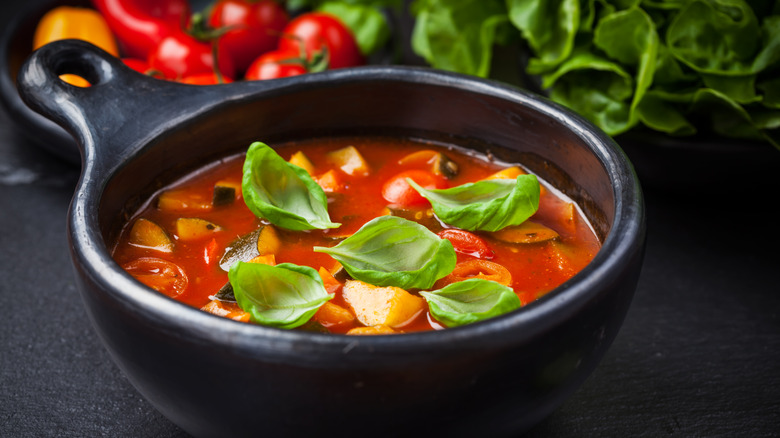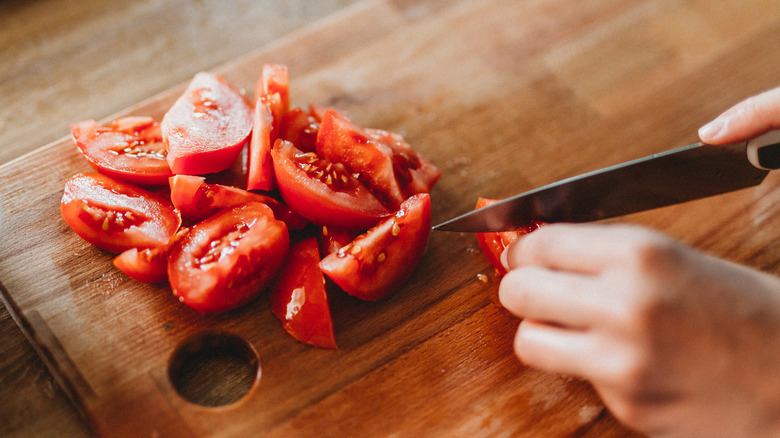The Best Time To Add Tomatoes To Soup
Whether you need the perfect slow-cook meal, are looking to batch cook for the week, or the doctor ordered you to get under the covers and eat only what you can slurp, there are few better or more comforting dishes than a good bowl of soup. But when you don't feel like making a complex recipe or just have a bevy of ingredients that need to be used up, combining everything in a pot is the ultimate cheat code for an easy, delicious meal.
While we love the simplicity of soup, it's worth implementing some pro tips that elevate soup from hearty to divine. One such tip is when incorporating tomatoes into your favorite recipe, less is more when it comes to cooking time. Instead of dumping every veg in at once, or even right after sautéeing your onions, garlic, and celery, wait to add them until later. For a mix of veggie types, the tougher ones will need more time to soften, while tomatoes break down too much with a long simmer.
Tomato's acidity can halt the cooking process
But it's not just the time on the heat that matters. While chili, minestrone, and vegetable soup wouldn't be much without the robust flavor and acidity natural to tomatoes, a quirk of culinary science is that lowering the pH of a dish can prevent the breaking down of beans and other tough veg. To avoid a bowl full of undercooked bites (especially when cooking with fresh, not canned beans), wait to toss in those 'maters until the recipe only needs around 20 more minutes of cooking time. This allows your other ingredients to soften to perfection and still gives the tomatoes plenty of time to cook down. Research has also shown that longer cook times can lower the levels of naturally occurring vitamin C in tomatoes.
Wondering if fresh or canned is the way to go or if this changes this soup tip? The short answer is, use whatever's convenient. Both types are acidic, and for the vast majority of recipes, fresh will do as well as canned. Whether you're picking off the shelf or the vine, the San Marzano variety is widely regarded by chefs and home cooks as the premium choice due to its mild, balanced flavor, fewer seeds, and meaty (not-watery) interior. So, at least when it comes to the tomatoes in your favorite soups or stews, less really is more.

